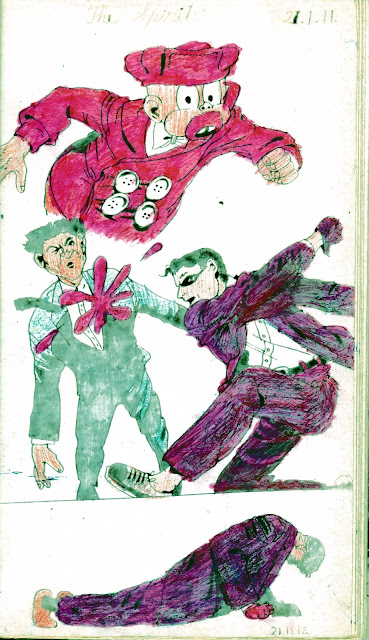In 1982 I joined Kinetographics, a film production company owned by Gary Kurtz. Gary had worked with George Lucas for years producing (and being creatively instrumental in) American Graffiti, Star Wars, and The Empire Strikes Back but was now developing movies on his own. I joined as his director of animation development and as an associate producer on the production of an animated feature based on Winsor McCay’s early 20th-century comic strip, Little Nemo in Slumberland, which Kinetographics was planning to co-produce with Japanese anime producer,TMS Entertainment. For two year previous I had been involved with Gary in the development of an animated feature based on Will Eisner’s The Spirit (of which I wrote about for the Los Angeles Times in 2008).
Part of my task was to put together the team of American talent that would develop the film with the Japanese, and collaborate on the production in Tokyo. I was proud of the team I gathered, which included Roger Allers (who later co-wrote and co-directed The Lion King); Andy Gaskell (who was later the art director on The Lion King); Randy Cartwright (who later was an animator for, and worked on the story of a number of Disney features, including The Lion King); Robin Budd (who returned to his native Canada and became a major TV animation director), and Norton Virgien (who later co-directed the Rugrats Movie, and has won a couple of Emmy Awards).
I was involved in the production for two years until it became clear to me that this co-production between two very different animation cultures was never going to work. At least not to our satisfaction. I left at the end of my contract with Kinetographics. The film our team was working on was never made, except for an opening sequence that made it into the eventual film TMS made with other American’s involved.
However, the experience was, on a whole, great, My wife (we were married during production) and I loved living in Tokyo, and I got to know one hell of a nice and talented man, Yasuo Ohtsuka.
Ohtsuka was, even then, one of the grand men of Japanese animation. He was very excited by our co-production, as he was as very interested in bringing American style character animation to Japan as we were in adapting Anime’s more creative approach to subject matter for animation. Remember, this is 1982 when Disney animation was “dying” and the Care Bears Movie was setting the pace.
In September of 1982 Ohtsuka gave me a wonderful gift. It was a sketchbook from his teenage years when he was teaching himself how to draw. It was full of his copies of political cartoons he saw in newspapers, including the U.S. Army’s Stars and Stripes (this was 1946, during our occupation of Japan), portraits of American soldiers, and his rendering of American comic strip and cartoon characters.
Imagine this fifteen-year-old-boy, living near an American military base, asking “Yank” soldiers to pose, pouring over American newspapers, drawing, drawing, and drawing, trying -- successfully -- to hone his skills.
I was deeply moved by this gift, and it’s remained precious to me ever since. Sadly I had nothing of such value to offer Ohtsuka in return.
A while back I sent some of the sketches from the book that I had scanned to an old friend from high school. Her son was immersed in Japanese culture and really enjoyed them. I promised I would send more. But I got to thinking, as there a large and active fan-based here in America for Japanese anime, maybe others would enjoy looking at Ohtsuka’s formative work as well. So, below are the sketches from the book, except for a few that were just sketches of American army helmets.
Maybe this is the only gift I have to give to Ohtsuka. To let people see the work of a very talented, enthusiastic teenager, living in a defeated Japan, not being defeated himself, but determined to learn his art and take joy from it. And one who grew up to become a wonderful man and artist, and an important part of a country’s unique film culture.
 |
| Ohtsuka in 1983 |
 |
| Ohtsuka today |
 |
| The cover of the sketchbook, which was handmade by cutting up old magazines |
 |
| Inside the front cover, signed and dated by Ohtsuka |
 |
| You can see here part of the magazine page |





























No comments:
Post a Comment